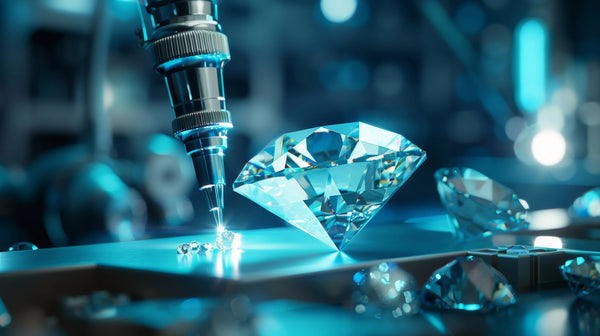Odin Pro Is The Best Way To Play PS2, GameCube And Dreamcast
[ad_1]

The Steam Deck has unquestionably revitalized people’s interests in handheld gaming on anything other than a Switch. But had it never happened, 2022 would still have been a year packed with Switch-sized gaming devices, primarily thanks to evolutions in the world of emulation. Right at the front of that pack is new console creator AYN, with its crowdfunded Odin handheld, and it is absolutely superb.
AYN’s 2021 pitch was smart. A 6-inch-screened gaming device designed not to run the latest AAA console and PC games, but rather one capable of emulating previous generations to a standard the emu market was presently lacking. It certainly proved a popular notion: The 100,000HKD ($12.7k) crowdfunding target was blown out of the water, then off the planet entirely, its total eventually reaching over $3.6 million. And then, in stark defiance of most crowdfunded gaming enterprises, the device actually started shipping pretty much on time.
The early purchasers have received their devices now, and we’re lucky enough to have gotten our hands on one thanks to the very splendid RetroDodo, who lent us theirs! If you want one of your own, you’ll have to wait in line until August–something I immediately chose to do after a morning spent playing with this one, because it’s so damned good. This is the new best way to play your personal collection of retro console games.

There are in fact three different versions of the Odin: the Lite, Base and Pro. The Lite is a significantly cheaper, but significantly less powerful machine, coming in just under $200. Not having used one, it’s hard to attest how it holds up against some of the more strikingly impressive emulation of the Base and Pro, but it’s safe to say it would offer an extremely pretty way to play games from N64 and backward. So, much the same as the previous generation of emulation machines, like my personal favorite, the RG351M, but with a much larger screen and an Android operating system. But let’s move on to the main event, the Odin Base and Pro.
What we have here is a 5.98 inch IPS LCD screen, set within a machine that feels like the gorgeous lovechild of a Nintendo Switch and Sony PSP. Smaller than a Switch, bigger than a Switch Lite, and far comfier to hold than either, it carries a Snapdragon 845 and 4GB or 8GB RAM depending upon whether you go Base or Pro. The only other differences between the two are the storage and battery life, with 64GB or 128GB of on-board storage, and a 5000mA or 6000mA battery respectively.
This is all in a very solid-feeling plastic casing that feels sleek and expensive. It has analogue sticks top left and bottom right (oh Steam Deck, why couldn’t you have done this?), d-pad bottom left, and standard X, Y, A, B buttons top right. There are two shoulder buttons either side, and a bonus pair of rear buttons that sit right where your middle or ring fingers will land. It feels good and weighty, but without feeling like a brick, definitely less cumbersome than a Switch or Switch OLED, mostly because it’s a smaller box overall.

I’m not going to pretend to know my way around a Snapdragon CPU, but I do know that the 845 is a few years old, and might immediately concern some as being the chip you would have found inside a Pixel 3. But the great news is, by some sort of evil magics (and cooling fans) the Odin is able to wring so much more out of it, and I’m blown away by the performance. This is the first handheld emulation device I’ve used that can run the N64/Dreamcast’s classic shoot ‘em up, Bangai-O, with its frenzy of processor-hungry action, without smoke coming out of the sides, let alone as smooth as butter. And that’s not to mention its capability with PS2 titles.
The Odin comes with a bespoke version of Android 10, rather than the more usual Linux-based OS of most emu machines. This also gave me pause, as I’ve learned my way around RetroArch and this put me on less familiar territory. Turns out I was a big silly, because with the Google Play Store right there, you can just download absolutely any emulation software that takes your fancy. (Including RetroArch, although I didn’t muster the patience to get it working.) It’s not as neat as having everything in one package, but with either the bog-standard Android homescreen, or Odin’s own launcher, you can jump between apps with nary an issue.
This done, it’s time to plunder your personal collection of older games, because, as you know, to play games you didn’t buy is piracy. And as I do with any emu device I get, the first thing I did was see if it can run GoldenEye.
Oh my goodness, it can run GoldenEye. Every retro machine claims it can, but they never do. The Odin does! Unfortunately this immediately led to my discovery that a twin-stick modern gaming device is no way to play a game specifically designed for the N64’s maddest of mad controllers. Ah well. But hey, it ran it!
Equally surprising was how well it handled the PS2’s Spider-Man 2, at least in terms of running at a solid framerate.,Unfortunately, textures glitched in and out like the city was having a seizure, which made things pretty uncomfortable to play.Though, that is the sort of thing that can possibly be fixed with enough fiddling under the hood–the more exciting thing was just how smoothly Spidey moved, climbed and swung around the flickering city.
Dreamcast emulation is handled exquisitely via redream, where I finally achieved my Bangai-O dreams, but also sprinted about at full speed in Sonic Adventure, and careened down hills in Crazy Taxi. These are all games I’ve previously never got running properly on a handheld.
The only thing I tried that the Odin couldn’t muster was Outrun 2006 on PS2. But never mind, because the PSP version ran sublimely well.

I’ve seen videos of people putting Windows 11 on the Odin Pro, running off its own chip, which means you can genuinely install Steam on this thing should you feel the need. That lets you use the console’s controls mapped to Windows’ 360 controller setup for gaming. However, GamePass refuses to install. But in that linked video, Cuphead runs at a steady 51 FPS, and even Skyrim manages 45-50.
But with the simplicity of being able to use the Play Store for emulators, and indeed for just playing all your favorite Android phone games on a gorgeous handheld, I don’t think I’d feel compelled to move away from that OS. This is all so neat, the Odin has immediately become my number one way to play retro games. Except, of course, it’s not actually mine, and I have to give the machine back to its rightful owner! Which led me to immediately join the queue for the next production run of the device, which is due to ship in August.
A quick note on that: I highly recommend getting one via AYN’s website, rather than the IndieGoGo. That’s not as simple a feat as it first sounds, since the Odin’s own homepage will direct you back to the IGG, but follow this link and you’ll get it directly from the company. Why? Because you’ll save yourself about $100. For some reason, the IGG version can only be bought as part of a “Super Pack,” which includes the “Super Dock,” and HDMI cable, screen protector, hard case, earbuds and a bag. The dock sounds awesome, but I’ve not been able to test one yet, and the rest is guff you just don’t need. Pick it up from AYN and it’s currently at $239 for the Base, and $289 for the Pro. (There’s also the Pro 256GB for $328, but the only difference is that extra storage space, which you flat-out don’t need given you can stick in anywhere up to a 1TB micro-SD card.)
The Super Dock can be bought separately for $68, and will let you dock it like a Switch, played on your TV via an HDMI connection, along with an ethernet port, as well as giving you five USB outs for controllers, and best of all, two proper semi-circular ports for your N64 controllers! That solves the GoldenEye issue! Oddest of all, it has a space in the back for a 2.5” SATA drive, which is downright peculiar.

I’ve got myself an Odin Pro coming in the summer, and I’m very pleased. I’m just upset I have to give this one back in the meantime. It’s going to feel like quite the backward step to go back to my teeny-screened Anbernic to continue playing GBC Zelda games, let alone the whole other generation of 3D consoles it cannot support. And since Brandon “RetroDodo” Saltalamacchia so generously let Kotaku borrow his Odin, you could do a lot worse than to check out RetroDodo’s coverage of the Odin, and their detailed comparison between the Odin and the Steam Deck.
2022 was supposed to be an interesting year for retro consoles launching with bigger screens, but with Anbernic’s RG552 proving a disappointment, and others just not showing up to the party, AYN has won this hard. The Odin is by far the best way to play emulated games today, finally seeing PS2, GameCube and Dreamcast emulation working on a handheld, with a lovely screen, and all in an incredibly comfortable shell.
[ad_2]
Source link








